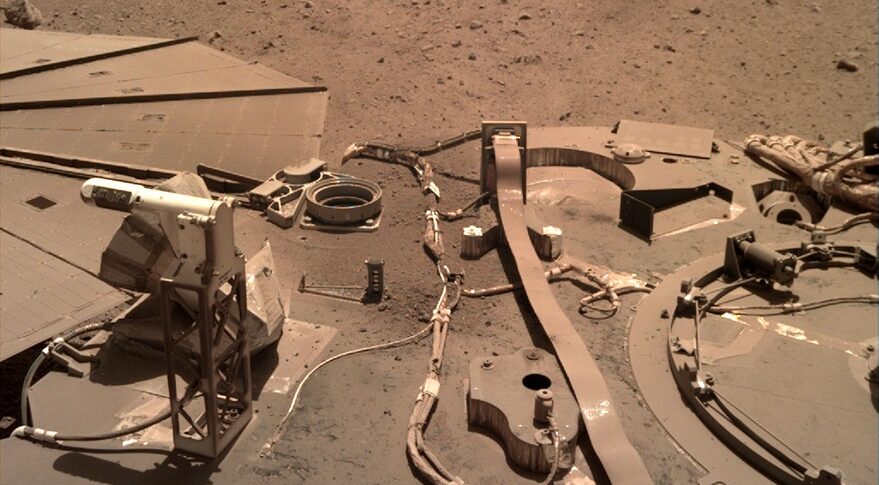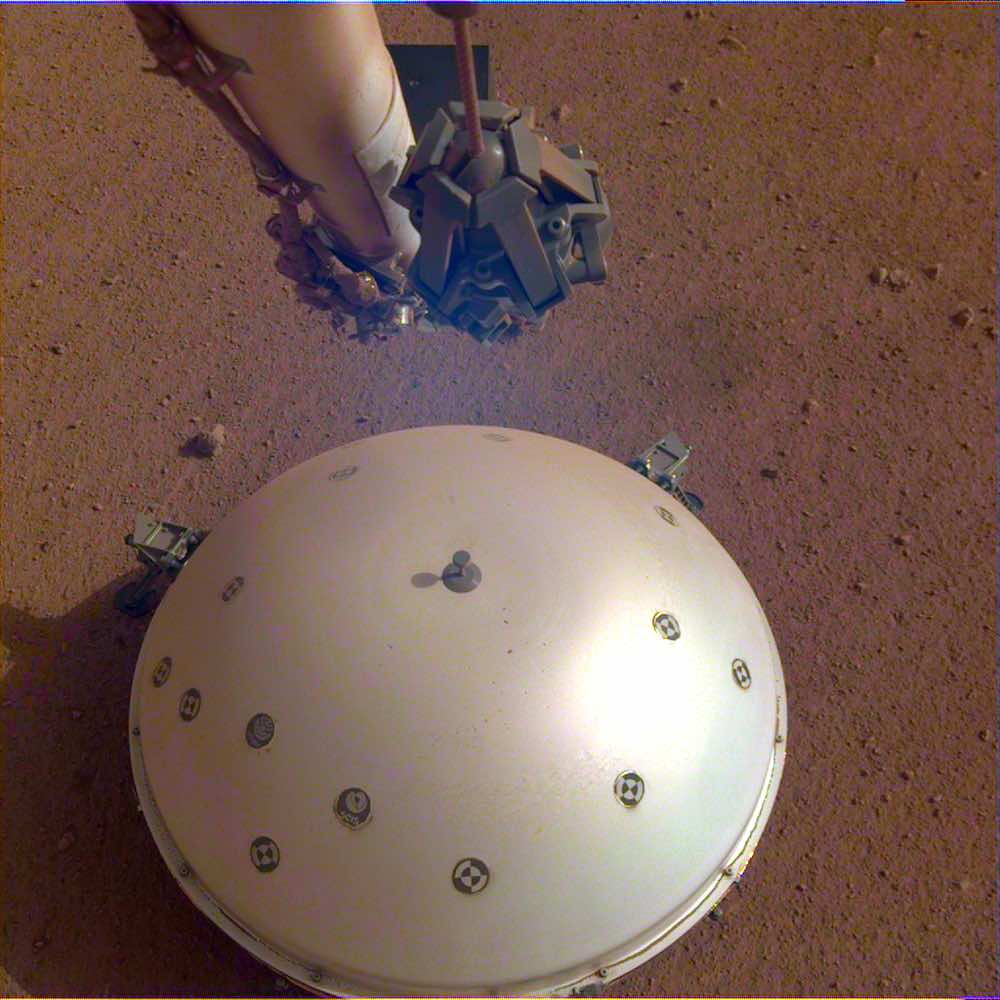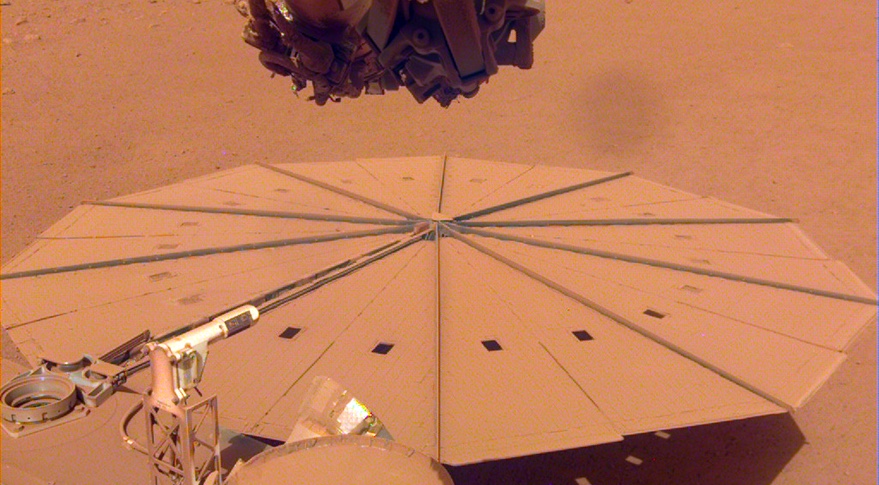InSight recovers from dust storm as lander’s power continues to waneby Jeff Foust — February 5, 2022 [SN]
 Increasing amouts of dust on solar panels (left) on the InSight Mars lander have drastically reduced available power and could force the mission to end in 2022. Credit: NASA/JPL-Caltech
Increasing amouts of dust on solar panels (left) on the InSight Mars lander have drastically reduced available power and could force the mission to end in 2022. Credit: NASA/JPL-CaltechWASHINGTON — NASA’s InSight Mars lander has recovered from a safe mode caused by a dust storm in January, but the project’s leader says the mission is still likely to end within a year because of declining power levels.
In a presentation at a meeting of the Mars Exploration Program Analysis Group (MEPAG) Feb. 3, Bruce Banerdt, principal investigator for the InSight mission, said he expected the lander to resume normal operations Feb. 5 after going into a safe mode Jan. 7.
Source:
https://spacenews.com/insight-recovers-from-dust-storm-as-landers-power-continues-to-wane/NASA lander detects biggest ‘marsquake’ yetMay 16, 2022 Stephen Clark [SFN]
 The InSight lander’s seismometer instrument, covered by its wind and thermal shield, on the surface of Mars. Credit: NASA/JPL-Caltech
The InSight lander’s seismometer instrument, covered by its wind and thermal shield, on the surface of Mars. Credit: NASA/JPL-CaltechNASA’s InSight lander operating on the surface of Mars has detected the most powerful seismic tremor ever measured on another planet, a “marsquake” estimated at magnitude 5, strong enough to reveal new insights about the deep Martian interior.
The InSight spacecraft’s seismometer instrument detected the quake May 4 from its position on a broad equatorial plain in a region known as Elysium Planitia. NASA sent $1 billion InSight mission to Mars in 2018 to collect data on the internal structure and geology of the red planet.
https://spaceflightnow.com/2022/05/16/nasa-lander-detects-biggest-marsquake-yet/NASA confirms impending end for InSightby Jeff Foust — May 18, 2022 [SN]
 A recent image from NASA's InSight Mars lander shows the accumulation of dust on one of its two solar arrays, causing power levels to drop to critical levels. Credit: NASA/JPL-Caltech
A recent image from NASA's InSight Mars lander shows the accumulation of dust on one of its two solar arrays, causing power levels to drop to critical levels. Credit: NASA/JPL-CaltechWASHINGTON — NASA’s InSight Mars lander mission will likely conclude by the end of the year as power levels for the spacecraft continue to decline, project officials confirmed May 17.
At a briefing about the mission, which has been on the surface of Mars since November 2018, project leaders said science operations will likely end in July as the output of the spacecraft’s two solar panels, coated with dust, drops below critical levels. Increasing dust levels in the atmosphere from seasonal changes are exacerbating the power decline.
https://spacenews.com/nasa-confirms-impending-end-for-insight/